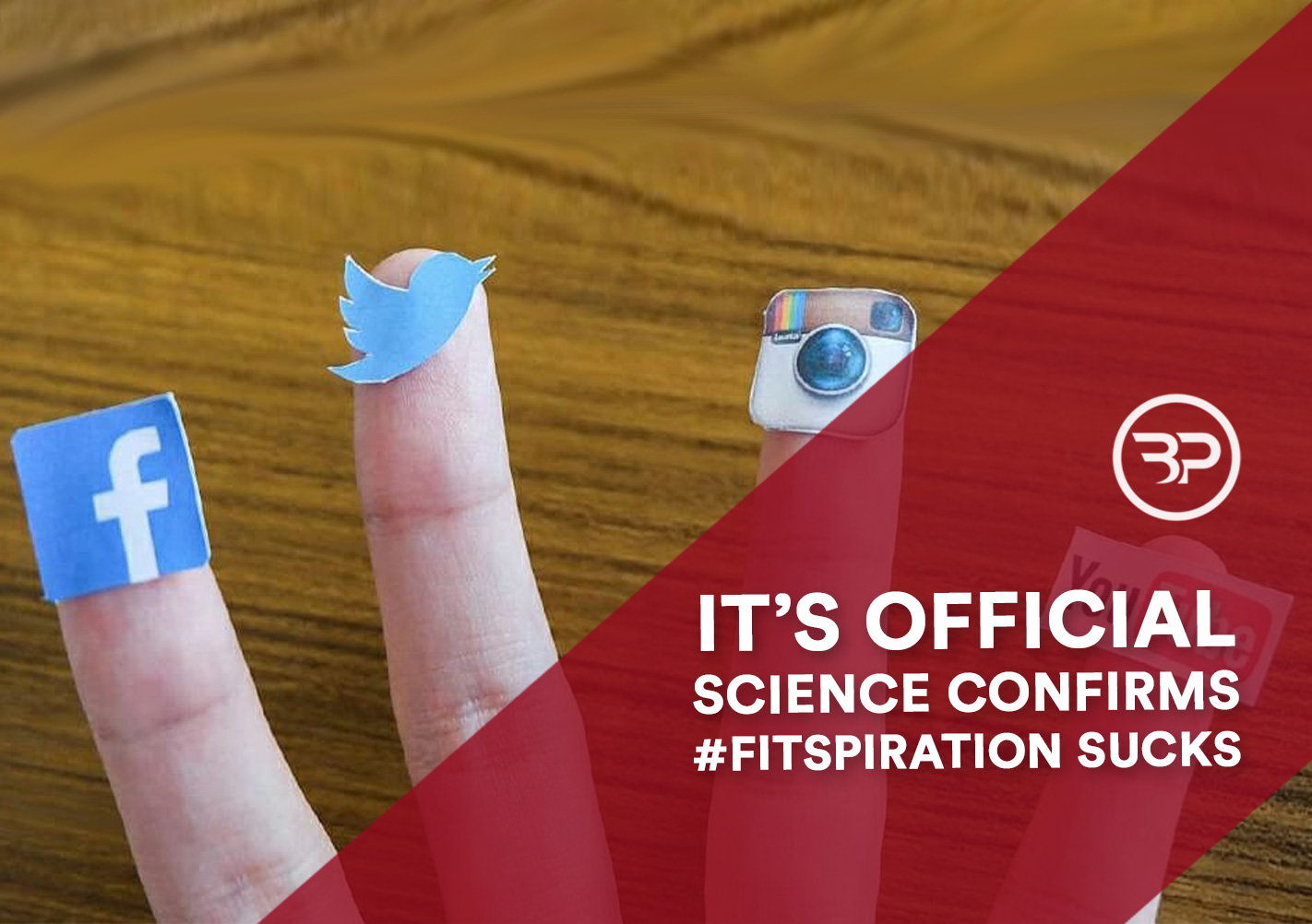How to Find Your Ideal Personal Training Clients
March 22, 2016
By Eric Bach, CSCS is a personal trainer, author, and fitness business coach in Denver, Colorado. Eric’s passion is on simplifying the process of building an online fitness business and helping trainers overcome information overload to a build a successful fitness brand.
Discover How To Make More Money & Work Fewer Hours With A Hybrid Fitness Business. Grab the Six Figure Fitness Business Guide below.

Whether you train online or in-person, do you want to get beyond just surviving as a personal trainer to build a thriving fitness business?
You first need to find your ideal personal training client. And then you need to find more clients just like them.
But that’s easier said than done. So please read what follows. It can help you avoid the mistakes I made. You’ll jump start (or supercharge) your career.
The Story
Let’s begin with how I looked at things in my early years as a personal trainer. Every gym member was a prospective client. It didn’t matter who they were. Young, old, male, female, athletes, obese, or otherwise…I’d slam another grande Americano and train anyone, anywhere, anytime.
After all, I was just another broke trainer living paycheck to paycheck. I couldn’t be choosy. I worked split shifts and hustled every way I could.
And while it was a great learning experience, some clients drove me insane. I’d dread their upcoming 5:00 am session.
As a trainer, I’m sure you’ve been there: Hustling, grinding and scraping by with everything you have. You take on anyone, even the time wasters. And to an extent, you need to hustle and see dozens of clients with different body types, goals, and training histories.
But after you’ve improved your ability as a trainer, it’s far better to have clients who:
- Share your interests
- Value your expertise
- Know that you can solve their problems
- Will become raving fans who refer others to you
The only problem? It’s hard to find that ideal client. And in the meantime, you have bills to pay.
So you end working with clients who are far from ideal. That makes it more difficult to get great results. But your business is built upon getting and replicating results for your clients.
The result? A bad business model that leaves you just grinding and surviving, not thriving and satisfied.
How to Identify Your Ideal Client
For a while, I thought l wanted to work only with athletes. That was until I found my true passion: helping busy guys (often ex-athletes, ironically) look better naked, simplify training, and maintain pain-free performance. I want to make having a strong, lean, and athletic body practical for busy dudes. Now, I wouldn’t have understood who I liked working with most…unless I took every client I could in the beginning. But that’s a short-term solution to a long-term problem.
Take five minutes to brainstorm your ideal client using the format that follows from my own business.
Client Name: Will
Age/Sex: 35 year-old male
Job/Income: Corporate attorney
Training History: Former high school athlete, played intramurals in college. Still plays pickup basketball and is well versed in the weight room.
Favorite Sport: Football, Virginia Tech Hokies (his alma mater).
Wants: To look better naked.
Biggest Struggle: Nutrition, namely fitting healthy habits into his schedule that often is full of business meetings, late nights, and entertaining clients.
Other interests: Travel, entrepreneurship (he wants to start a Vodka company, actually) Comedy (he listens to Louis CK on his way to work), Tesla (he drives one.) Coffee.

The more you know about your clients, the better you can target everything from marketing to coaching cues and writing an article.
Remember: people don’t buy personal training; they buy trainers. The more you can understand their fears, frustrations, desires, goals, and paint a picture on how to solve them, the more likely you are to be successful.
What You Need to Know
Originally used for writing sales copy, The Ultimate Sales Letter by Dan Kennedy recommends you answer the following questions about your clients.
What keeps your clients up at night?
Find this and solve it.
What are they afraid of?
Is it a lack of confidence? Not getting laid? Long-term health issues preventing them from being active with their kids?
What are their top frustrations?
It could be staying on a diet without counting calories. Or drinking socially still staying in shape. Or exercising and staying active without pain.
What changes are occurring in their personal or professional lives?
It could be major purchasing decisions, the start of Football season (this is a big deal) added job responsibilities, life events.
Who do they secretly, ardently desire most?
Do they want to look like a Football player or more of a Hollywood physique? Don’t laugh at the cliches, these are often the comparisons clients use.
Consider how your clients think. Are they analytical or intuitive? Do they have their own lingo? If so, try to adopt it. It is also helpful to know their income level, hobbies, political affiliations, and favorite TV shows.
What else interests them? Think beyond just the fitness industry to what their other interests may be. Political affiliations, hobbies, TV shows, music, and books are all great “depth” builders and conversation points with potential clients.
Here’s the takeaway.
(1) The most important thing is what’s important to your client (and NOT to you.)
(2) Meet clients where they are, not where you wish them to be.
(3) Grab our FREE Six Figure Fitness Business Guide for more tips, here.
But How Do You Actually Find The Ideal Personal Training Client?
Want to train athletes? Then why are you working at Planet Fitness? Looking to charge a premium for high-end clients? Look at gyms in major metropolitan areas near financial districts.
Consider where your prospective clients hang out. Is it in coffee shops? Then spend time in coffee shops and get to know the baristas. (Hat tip to Jon Goodman of The Personal Trainer Development Center for this tip.) Ask if you can put a flyer up for your services, buy the occasional coffee for someone else, and start making connections.
If you’re looking for online clients, ask your ideal clients where they get their fitness information. If you don’t have access to your ideal clients yet, search mainstream sites to see if your marketing messages are on target.
Athletes/Hardcore lifters: T-Nation
Powerlifting: EliteFTS, JTStrength
Fat Loss, looking better naked, activities outside the gym: Men’s Health, AskMen, Men’s Fitness
Facebook and Social Media
One of the best tools to finding your ideal client is this little-known website called Facebook. Somehow, Facebook convinced everyone it was a great idea to put their relationship status, age, address, favorite movies, books, video games, politicians, sports teams, job status, income, language, and about 1,000 other characteristics within a profile for the world to see.
So use Facebook wisely and don’t be a sleaze. It’s a bit creepy but Facebook has a wealth of demographic information about your ideal clients. Without going too far into the Facebook magic that we teach in Bach Performance Business Coaching you can create targeted ads that yield great results. Dani Singer of Fit2 Go called our expertise “a rare gem” after he spent $1,286 and brought in $35,256 in new clients, all in the span of a month and a half.
Determining Your Unique Selling Proposition
(USP)
Your USP sets you apart. It is the benefits your clients reap from working with you or buying your product.
How can you stand out from thousands of other trainers?
1. Be unique: As Scott Stratten once tweeted, “If you are your authentic self in your business, you have no competition.” I’d say 90% of trainers operate with the same few principles. The only way to stand out and be extraordinary is with passion, personality and excellent ability to relate to your clients on a personal level.
2. Focus on benefits, not features: No-one cares that you have an exercise library, a spiffy training app that integrates with myFitnessPal, and a plethora of experience as a coach. They care that you have an exercise library of exercises to help them train safely and make progress. Your training app is great, but the real benefit is it allows you to track, tweak, and optimize their program so they stay safe, pain-free, and healthy.
3. Expertise over experience. You have experience? Cool. I know a dude at my gym who’s been training for 25 years. The real benefit of your experience is your ability to navigate the tricky fitness world, helping your clients avoid the most common problems and get better results faster.
Your clients don’t care much about your certs, experience or tools. Those are all in the past. Personal training is a “what have you done for me lately” industry. Your clients want results, now. It’s your job to deliver the results.
Find your Ideal Personal Training Clients
Remember, people hang out with people who have similar interests. If you’re able to attract your ideal clients, they likely have five or more friends with similar goals and an interest in your services.
Build a personal relationship with your clients beyond the gym. Do a great job helping them achieve their goals. You’ll be rewarded with an endless supply of similar clients.
P.S. Need help?
Hundreds of trainers have grabbed their Free Six Figure Fitness Business Guide and started making more money online.
Did You Grab Yours Yet?









[…] December 6, 2016 […]
[…] December 6, 2016 […]
[…] December 6, 2016 […]
[…] Like it or not, how you look goes a long way in attracting your ideal clients. […]
[…] online trainer, use this as a guide to check your perspective on working with beginners as clients. This article will also help you find your ideal personal training […]
[…] your ideal client. Do the 10-Person rule and bookmark this article and you’ll be set. You should have done this in step three. If you haven’t, take five […]
[…] To learn more about determining your ideal client, read this. […]